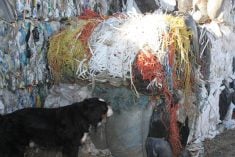LINDELL BEACH, B.C. – In 1969, a Mongolian scientist saw a Przewalski’s horse standing near a spring north of the Takhin-Shara-Nuru ridge in the Dzungarian Gobi.
This normally wouldn’t be cause for comment, but it was later realized that the stallion was the last confirmed sighting of the wild horse in its ancestral Mongolian range.
By then, the International Union for the Conservation of Nature had already listed the species as extinct in the wild.
However, the Przewalski’s horse was thriving elsewhere. Since the early 1900s, the horse had been bred in captivity in zoos from a founder herd of 13 animals.
Read Also

Message to provincial agriculture ministers: focus on international trade
International trade stakeholders said securing markets in the face of increasing protectionism should be the key priority for Canada’s agriculture ministers.
By the early 1990s, there were sufficient numbers to float the idea of reintroducing a small group to the Mongolian steppe.
In 1992, reintroductions began in the Takhin Tal near the Gobi National Park and in the Hustain Nuruu Reserve in Mongolia.
By 2008, 325 Przewalski’s horses were free-ranging in Mongolia.
This experience may contribute to the debate over whether free-range horses in North America are feral or a reintroduced native species.
Horses evolved exclusively in North America over 55 million years. Many evolutionary lines came and went, leading to the appearance of the modern genus Equus four million years ago.
The species began dispersing across the Bering land bridge to Eurasia two to three million years ago but continued to evolve and survive in North America until the end of the last Ice Age. Then, along with many other species, they disappeared from North America 11,000 to 13,000 years ago.
Hernan Cortez arrived in Mexico in 1519 with his army and 16 horses, the first of many Spanish expeditions.
Many of these horses escaped or were turned loose. They thrived in socialized herds and spread across the vast interior grasslands of North America, integrating so well into the ecosystem it could be argued their ancestral niche was still intact.
So was the Spanish horse, like the Przewalski’s horse, a reintroduced species?
Some biologists argue yes.














